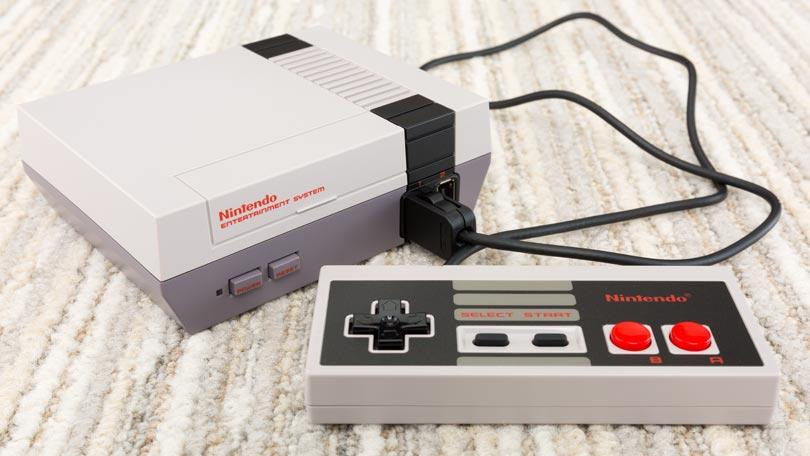In the world of video games, the past has a profound impact on the present and future. The 8-bit and 16-bit gaming eras, which spanned from the late 1970s to the early 1990s, left an indelible mark on the gaming industry and the hearts of gamers worldwide. In this article, we'll delve into the legacy of these iconic gaming consoles, exploring their enduring influence on gaming culture, technology, and nostalgia.
1. The Birth of 8-Bit and 16-Bit Gaming
The terms "8-bit" and "16-bit" refer to the processing power of the central processing unit (CPU) within gaming consoles. During the 8-bit era, consoles like the Nintendo Entertainment System (NES) and Sega Master System ruled the gaming landscape. These machines offered a significant leap in graphics and gameplay compared to their predecessors.
The 16-bit era ushered in consoles like the Super Nintendo Entertainment System (SNES) and Sega Genesis (known as the Mega Drive in many regions). These consoles introduced more advanced graphics, richer audio, and a new level of gameplay depth.
2. Gaming's Golden Age
The 8-bit and 16-bit eras are often regarded as the "Golden Age" of gaming. During this period, some of the most beloved and enduring franchises were born:
Super Mario: The mustachioed plumber Mario made his debut in "Donkey Kong" during the 8-bit era. The SNES saw the release of classics like "Super Mario World."
The Legend of Zelda: Link's epic adventures began on the NES with "The Legend of Zelda" and continued on the SNES with "The Legend of Zelda: A Link to the Past."
Sonic the Hedgehog: Sega's blue speedster, Sonic, raced into our hearts on the Genesis with the original "Sonic the Hedgehog" game.
Final Fantasy: This legendary RPG series started on the NES but truly flourished on the SNES with titles like "Final Fantasy VI" (released as "Final Fantasy III" in North America).
These franchises, along with countless others, defined the era and set the stage for gaming's future.
3. Technological Advancements
The 8-bit and 16-bit eras introduced significant technological advancements that shaped the gaming industry:
Graphics: 8-bit consoles brought us pixel art and iconic character designs. The 16-bit era took this further with more detailed sprites and backgrounds, showcasing the visual potential of gaming.
Sound and Music: 8-bit consoles had limited sound capabilities, resulting in iconic chiptune music. The 16-bit era introduced richer audio experiences, with memorable soundtracks that remain cherished to this day.
Gameplay Innovation: These eras witnessed innovations in game design, from the expansive world of "The Legend of Zelda" to the platforming perfection of "Super Mario."
4. Nostalgia and Retro Gaming
The nostalgia factor associated with 8-bit and 16-bit gaming is undeniable. Many gamers who grew up with these consoles continue to hold them close to their hearts. Retro gaming has become a thriving subculture, with enthusiasts collecting vintage consoles and games.
In recent years, the popularity of retro-inspired games, often developed by indie studios, has soared. Titles like "Shovel Knight" and "Stardew Valley" capture the essence of classic gameplay while offering modern twists.
5. Emulation and Preservation
Emulation has played a pivotal role in preserving the legacy of 8-bit and 16-bit games. Emulators are software programs that mimic the hardware of these classic consoles, allowing gamers to play old titles on modern computers and even mobile devices.
While emulation raises questions about copyright and ownership, it has undeniably contributed to keeping classic games accessible to new generations of players.
6. Reboots and Remakes
Game developers recognize the enduring appeal of classic franchises and have revisited them with modern reboots and remakes. Titles like "The Legend of Zelda: Link's Awakening" on the Nintendo Switch and "Streets of Rage 4" capture the essence of the originals while incorporating modern graphics and gameplay elements.
These reboots allow long-time fans to revisit beloved worlds and introduce classic gaming experiences to a new audience.
7. Modern Influences
The design principles and gameplay mechanics developed during the 8-bit and 16-bit eras continue to influence modern games. Pixel art, for example, has experienced a resurgence in indie gaming, with titles like "Undertale" and "Hyper Light Drifter" demonstrating the enduring appeal of retro aesthetics.
Additionally, the emphasis on tight controls, accessible gameplay, and storytelling from that era continues to shape how games are made today.
8. Preservation Efforts
The gaming industry recognizes the need to preserve its history. Organizations and enthusiasts actively work to archive and document 8-bit and 16-bit games and hardware. This preservation ensures that future generations can experience these pivotal moments in gaming history.
9. The Retro Gaming Community
Retro gaming conventions, online communities, and YouTube channels dedicated to classic gaming have thrived. These communities celebrate the nostalgia and passion for these vintage consoles and games, fostering a sense of camaraderie among enthusiasts.
Conclusion: An Everlasting Legacy
The legacy of 8-bit and 16-bit gaming consoles endures not only in the hearts of gamers but also in the technology, design, and culture of the industry. These eras laid the foundation for modern gaming, instilling a love for immersive storytelling, challenging gameplay, and the joy of exploration.
As we continue to enjoy the latest gaming experiences, it's essential to remember and appreciate the consoles and games that came before, as they continue to shape the gaming landscape and offer a timeless source of joy and inspiration for players and creators alike. The 8-bit and 16-bit legacies remain vibrant and cherished, reminding us that the past is very much a part of the present and future of gaming.
